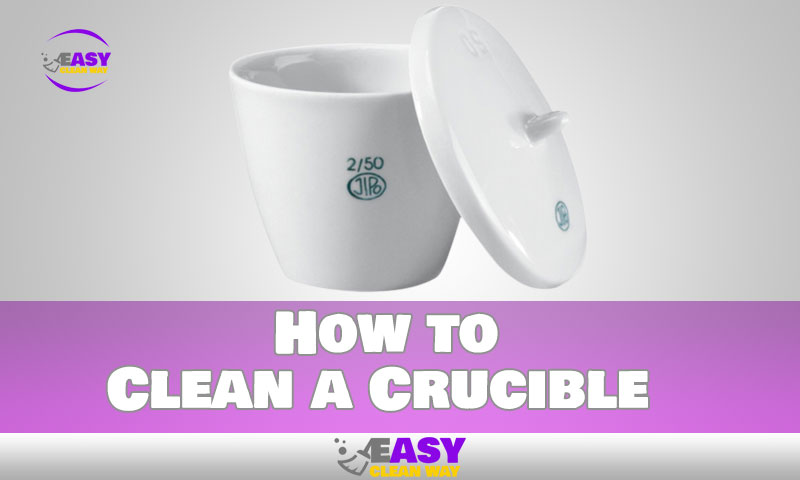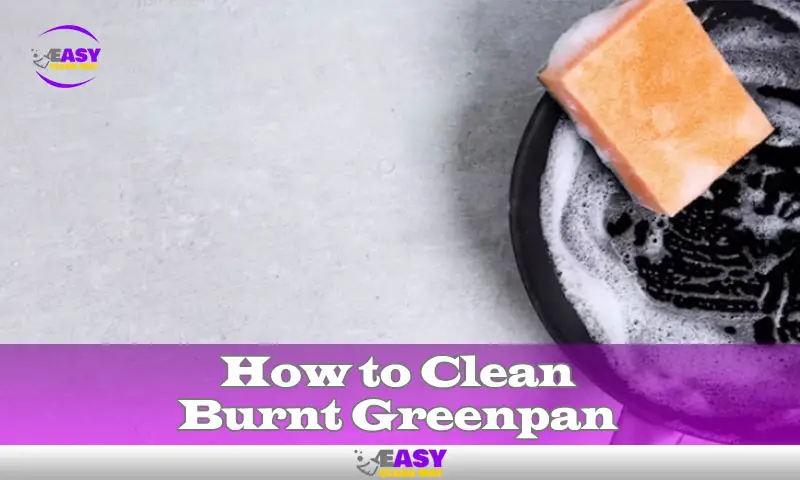Cleaning a crucible is an important step that must be done properly to ensure your crucible is free of contamination and works optimally.
Cleaning a crucible requires some specialized materials and tools, as well as a process of steps that must be completed in order, and with attention to detail. First, all debris must be removed from the crucible before it can be cleaned. This can be done with various tools such as steel wool, scrapers, and/or wire brushes.
Next, the crucible must be cooled to ensure any residual heat won’t cause further damage when cleaning. Once this is done, a mixture of hot water and detergent should be prepared to clean the inner surface of the crucible. This process should also include wiping down the exterior surfaces with a soft cloth or scrub brush and then drying them with compressed air or a lint-free cloth.
In this article we will discuss in more detail about how to properly clean a crucible for optimal performance with each step explained thoroughly.
What Is a Crucible?
A crucible is an essential piece of laboratory equipment used in various industrial and scientific applications, ranging from metal refining to materials testing. It is a container made of high-temperature tolerant material like ceramic or graphite, used for the processing of materials and heat treatment of samples. The main function of a crucible is to withstand extremely high temperatures while containing the material that needs to be melted or heated.
It’s crucial to make sure that any leftover material in the crucible from heating activities is eliminated with appropriate cleaning for maximum performance. For this, the crucible must be boiled for three hours while being submerged in dilute hydrofluoric acid. For best results, it should next be mechanically cleaned in an ultrasonic bath with the appropriate cleaning solution. The crucibles should then be rinsed with distilled water after being progressively heated to 1000 degrees.
With these steps, you can easily achieve proper crucible cleaning and ensure that your lab equipment remains in top condition for many years to come!
What Materials Are Used to Make Crucibles?
Crucibles are typically made of either ceramic, platinum, or alumina. Ceramics are the most common materials used in crucibles due to their affordability and durability. Platinum is more expensive but provides better temperature resistance and a higher melting point than ceramics, making it ideal for special applications. Alumina is used for applications that require high heat and corrosion resistance, such as those involving reactive metals like titanium and uranium.
There are a number of approaches to picking from when it comes to effectively cleaning a crucible. The instruments employed may include scraping debris with a metal spatula, rinsing with hot water or using a mild soap solution, or soaking it in diluted hydrofluoric acid, depending on the type of material the crucible is composed of (HF). To prevent contamination, you should also use cleaning implements like tongs.
No matter what methodology you choose, it’s crucial to keep in mind that while cleaning your crucible, you must take the appropriate safety precautions. The best method of cleaning it without causing harm or contamination depends on the type of material it is constructed of.
What Is the Proper Cleaning Process for a Crucible?
When it comes to cleaning a crucible, it’s critical to follow the proper steps to ensure that the crucible is in its best condition when used. Here’s how you should go about cleaning your crucible:
- Soak the crucible in a diluted hydrofluoric acid solution for at least 24 hours. This will help break down any material buildup in the crucible.
- Boil the crucible for three hours with additional hydrofluoric acid to get rid of stubborn residue and mineral deposits.
- Rinse the crucible in hot water to remove any remaining residue or acids.
- Dry your crucible with a clean cloth and be sure to put it away before it has cooled completely, otherwise cracks may form from rapid temperature changes.
- Lastly, use a soft brush and hot water to clean the outside of the crucible or lid for any additional dust or debris that may have collected on its surface during storage or use.
By following these steps, you can ensure your crucible is effectively cleaned and ready for future use in melting various materials!
What Are Some Common Mistakes When Cleaning Crucibles?
Cleaning a crucible is not as straightforward as it seems. Here are a few common mistakes to avoid:
Not Scraping Any Residue From Experiments
It is important to scrape off any residue left over from experiments, as this material can gum up the crucible with time. Not removing the residue will result in a harder-to-clean and less effective crucible.
Not Rinsing With Hot Water
Hot water is necessary to help dissolve any solids stuck in the crucible. A cold or room temperature rinse will not be effective in cleaning the crucible properly.
Using Harsh Chemicals
Using abrasive chemcials to clean a crucible can damage its surface, leading to minor cracking and chipping over time. Instead, stick to mild soaps and warm water, rinsing thoroughly with water afterwards for optimal results.
What Safety Precautions Should Be Taken When Cleaning a Crucible?
When cleaning a crucible, safety is of utmost importance. Always remember to wear protective goggles and gloves while handling the crucible and its contents.
It’s also critical to pay attention to the heat that the flame that heats the crucible emits. The task can be completed with a mild flame. The crucible may split or fracture if the flame is too strong, which could result in mishaps or injury.
The crucible must then be rinsed with hot water once the material has been melted down, and any residue on its surface should be thoroughly removed with a clean cloth or brush. While working with your crucibles in future projects, this will guarantee that you have a clean and secure workspace.
How Often Should I Clean My Crucible?
The frequency of crucible cleaning depends on how often it is used. Cleaning the crucible every few days or after each batch is advised if you often use it for big batches of materials. But, if you only seldom use your crucible or are only using it for smaller batches, a deep cleaning once a month or once a quarter should be enough to keep your crucible in good shape.
No matter how often you decide to clean your crucible, following the proper cleaning process is essential for ensuring optimal performance and longevity of your piece of equipment. The process for cleaning a crucible can be broken down into three steps:
- Rinse the Crucible in Hot Water
- Dry Using Cloth or Alumina-Impregnated Nylon Webbing
- Soak in Acid Solution for at least 2 Hours
By following these steps, you will ensure that all dirt and debris that has built up over time will be effectively removed from the crucible and that its interior surfaces remain free from corrosion. This will help to ensure that your crucible maintains its integrity and performs optimally every time it is used.
People Also Like: How to Clean Ilse Jacobsen Tulip Shoes
Conclusion
In summary, proper crucible cleaning requires an effective yet safe method that saves time and money. Taking the time to plan ahead and consider the best way to clean the crucible will ensure that it lasts longer and the work is kept safe. The four-step procedure of heating, cooling, scrubbing, and rinsing with a mild acid is a good one to take into consideration. The crucible may be protected from harm and all pollutants can be eliminated by following these instructions and paying close attention to the small details. Your crucible can last for years with the right care and upkeep.
Hey there! I’m Alton Smith, your Clean Expert blogger. I’m on a quest to help you conquer chaos and embrace the joys of a tidy life.





